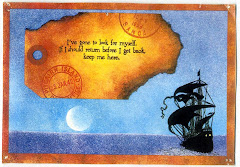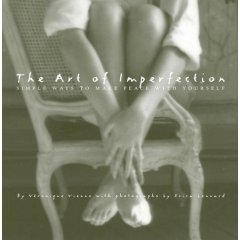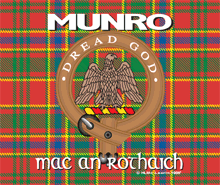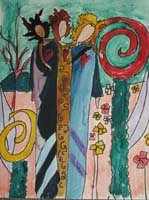"IRELAND"
Francis S. Walker
Francis S. Walker
Painting as described by Frank Mathew, 1907: "Along the north coast . . . the absence of men is remarkable. It is the women who carry the turf and dig the potatoes, which to those poor cottars {cottagers} are 'breakfast, dinner, and supper all the year round.'"
Several years ago I wrote a post entitled "An Gorta Mor", which means "The Great Hunger" in Gaelic. In that post, I outlined the tragic history of the great potato blight in Ireland, including background information on how the Irish - thanks to their absentee English landlords - came to be so dependent on the potato, and ending with a discussion of how the famine resulted in the massive Irish diaspora throughout the world, but especially to the United States.
This year I also wanted to talk about the Irish and the potato, but I wanted it to be on a happier note. The post will include links to different Irish potato recipes, but I will only print one recipe, for the potatoes I will be making on Saturday night. They are actually French bistro potatoes, but I love them and can't have enough of them so they will be my St. Patrick's Day potatoes.
"SORTING SEED POTATOES" by Martin Driscoll
The histories of the Irish and the potato are forever intertwined. Spanish Conquistadors found the Incas cultivating potatoes and soon discovered that these tubers - long-lasting and nutritious - were an ideal food. They brought the potato back to Europe and it soon became all the rage across the continent. The English, however, were resistant to the potato, bitter when uncooked. The pious rejected potatoes since they grew underground, "Satan's realm"! So, they tested them in their "colony" of Ireland.
Fortunately for the Irish tenant farmer, with barely an acre to cultivate, the potato produced larger - up to 12 tons per acre - and more reliable yields than grains. The typical Irish peasant ate from 8-12 pounds of potatoes a day, providing 80 percent of his caloric intake!
Notice that this book uses a black and white version
of the painting from the top of the post.
It was often said that Irish children thrived on nothing more than potatoes and milk, although that of course is an exaggeration. However, the potato is loaded with protein, vitamins and complex carbohydrates.
It's no wonder that the Irish, consuming all those potatoes, felt like they needed to come up with a variety of tasty dishes featuring the potato. Here are just a few:
BOXTY (IRISH POTATO PANCAKES)
"Boxty on the griddle,
boxty on the pan,
If you can't bake boxty
sure you'll never get a man."
Here is a link from Mr. Food's website for a recipe that purports to be authentic Boxty: http://www.mrfood.com/Potatoes-Rice/Boxty-Irish-Potato-Griddle-Cakes.
COLCANNON
Colcannon is the traditional Irish dish of potatoes and cabbage. From The Food Network, here is an easy colcannon recipe: http://www.foodnetwork.com/recipes/tylers-ultimate/colcannon-recipe/index.html. Kale is used instead of cabbage in some colcannon recipes.
CHAMP
Another simple and easy to produce recipe similar to colcannon is champ, which uses scallions instead of cabbage. They are combined with mashed potatoes, butter and milk, and occasionally salt and pepper. In some areas this dish is also called "poundies".
CREAMY POTATO SOUP
The Irish are well known for their consumption of alcohol, so for an Irish potato soup I chose the Daily Green's recipe which contains pale ale! This also has cheese in it, which is another reason it attracted me. I love beer cheese soup, so potato/cheese/ale soup can't be far off! Here's the recipe: http://www.thedailygreen.com/healthy-eating/recipes/pale-ale-potato-soup-44022908
IRISH STEW
Irish stew (stobhach Gaelach) is a celebrated Irish dish, yet its composition is a matter of dispute. Purists maintain that the only acceptable and traditional ingredients are mutton, potatoes, onions, and water. Others would substitute lamb and add such items as carrots, turnips, and pearl barley, but the purists maintain they spoil the true flavor of the dish.
Irish stew is the product of a culinary tradition that relied almost exclusively on cooking over an open fire. Back in olden days, it made sense to use mutton over lamb in Irish stew. The economic importance of sheep lay in their wool and milk. This ensured that only old or economically non-viable animals ended up in the cooking pot, where the meet needed hours of slow boiling.
The following recipe appeals to me, even though it flouts tradition by using lamb over mutton, in addition to beef stock, carrots, bacon, thyme, garlic, bay leaves and wine: http://allrecipes.com/recipe/irish-lamb-stew/.
IRISH SHEPHERD'S PIE
Even though corned beef and cabbage and colcannon are probably the most famous Irish dishes, Shepherd's Pie is close to the top of the list. Although the following recipe is billed as Irish Shepherd's Pie, it caters more to American tastes by using ground beef: http://www.ifood.tv/recipe/irish_shepherds_pie.
JULIE'S FRENCH BISTRO POTATOES
STANDING IN FOR AN IRISH POTATO DISH
IN HONOR OF ST. PATRICK'S DAY
Now for my potato dish, which is the easiest of them all to make. When I make this for company I use a 9x13 pan. When I make this for Dan and me I use a pan half the size.
Recipe for large casserole: Peel about five cloves of garlic. Crush them with your fingers or a knife and rub on the bottom and sides of the pan. Then finely chop the garlic and reserve.
Peel and slice approximately 6 large or 8 small potatoes. Layer half of them in the pan. Top with enough slices of deli- (thick-) sliced Swiss cheese to cover the potatoes. Top this with heavy gourmet cream (I like lots!). Scatter half the garlic over the top and salt if you wish. Repeat this procedure.
Bake uncovered at 350 degrees for an hour, or until potatoes are golden brown, then cover with tin foil and bake for another half hour.
To read my post from March 2009 about An Gorta Mor, with more paintings by Martin Driscoll, go here: http://celticanamcara.blogspot.com/2009/03/gorta-mor.html
To read my post from March 2009 about An Gorta Mor, with more paintings by Martin Driscoll, go here: http://celticanamcara.blogspot.com/2009/03/gorta-mor.html






.jpg)


































9 comments:
Oh, yum! Thanks for all the links! your recipe sounds great,too!
what a lovely post. I look forward to trying some of th erecipes soon. Tink
I'm supposed to be allergic to potatoes, but I eat them with impunity -- and alacrity! When I bake potatoes, I rub them in olive oil first. It makes their skins soft and tender.
Nice post!... I have always been interested on how "potatoes" were accepted and added to their cookery by many celtic peoples, like irish, galician, asturians, and bretons.
Maybe you will find interesting to take a look at some ancient recipes on my Celtic Sprite blog...
Keep up the good work!
bliss and blessings ♥
we will be eating bacon and colcannon on St Patricks day :-)
It wasn't until I married my Irish husband that I started to read Irish history. We happened to be living in Dublin at the time, I was almost ashamed to be English when I discovered this country had treated the Irish.
Potatoes are a staple food in our house.
interesting post Julie! My ex was Irish so I did use to make him some traditional for St. PO's day. I dont really bother now, although irish blood runs in my veins too.. I am 1/4 Irish.
hoping all is well with you both x
Leanne x
This is a great post...I love potato's and everything looks so good. And since I am knee deep in research of my family, we are so Irish it amazes me. I continue to keep you and your husband in my prayers...Love, Mary
Wonderful post....all of these recipes, they shall certainly keep me busy, both for St. Patricks day and for Ostara.
Thank Julie for enlightening my day!!
Blessings to you and Dan
Lawrie
Hi, I just thought you should know that the painting is not titled Ireland, but instead A Woman's Task still by Francis S. Walker.
Post a Comment